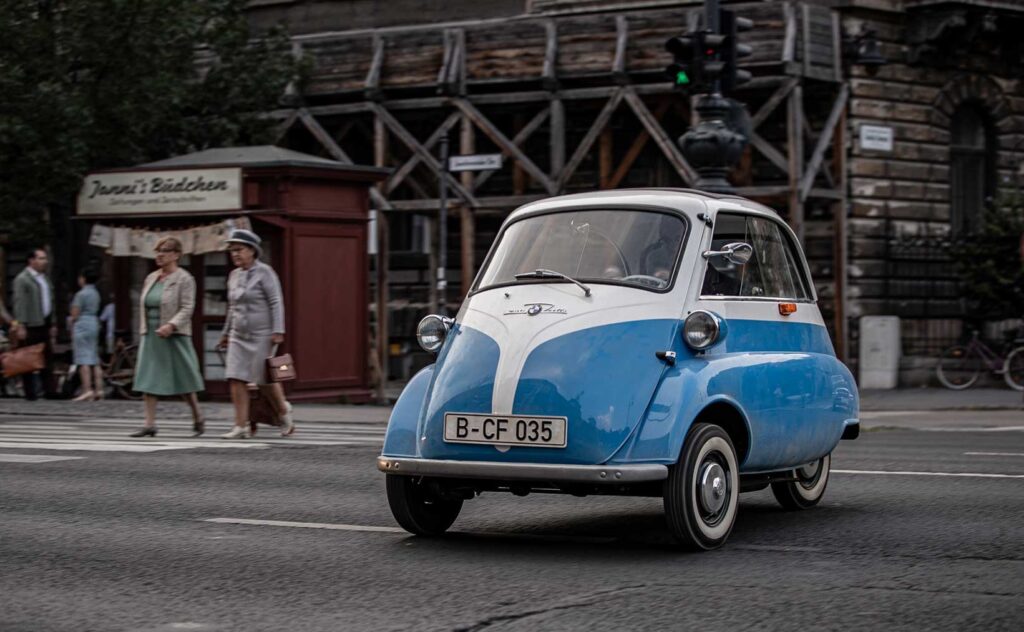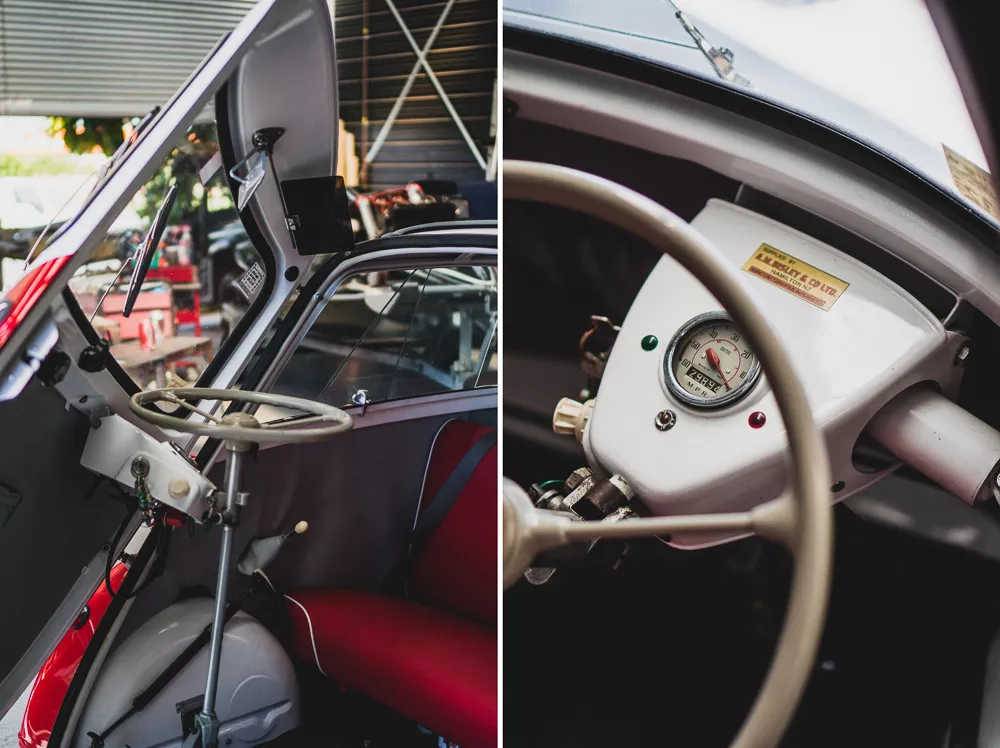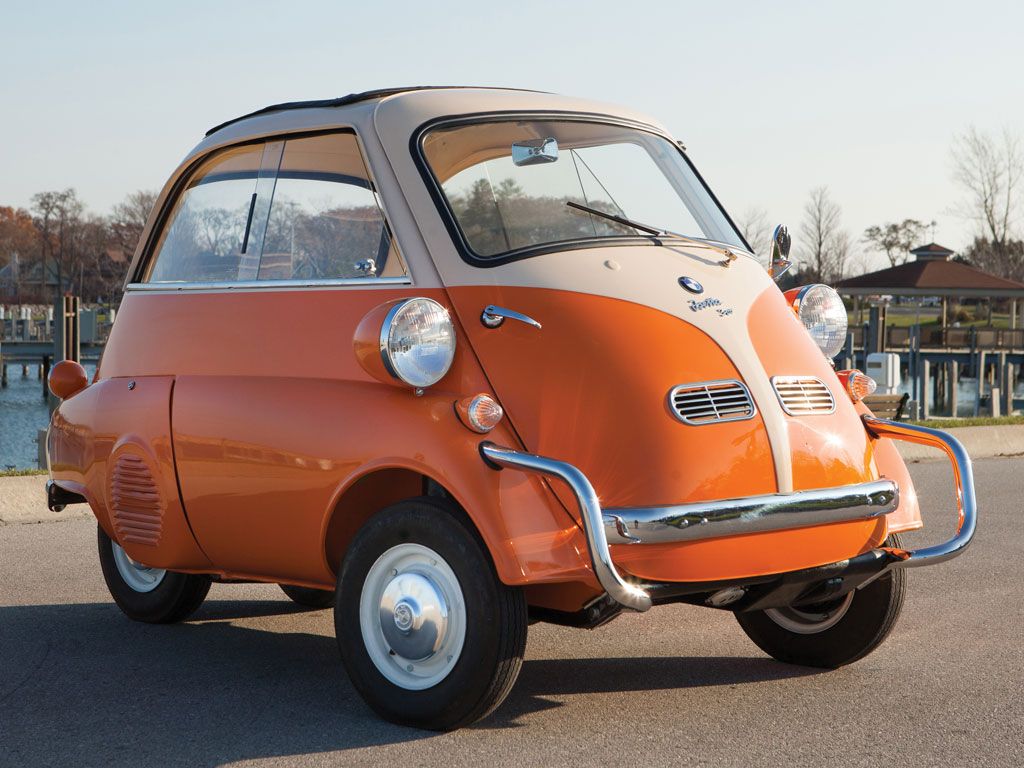
The BMW Isetta is a microcar with a rich history that spans several years and involves multiple companies. Here is a comprehensive history of this unique vehicle:
Design and Initial Production (1953-1954)
The Isetta was originally designed and produced by Iso SpA, an Italian firm that was primarily known for its refrigerators, motor scooters, and small three-wheeled trucks. Renzo Rivolta, the owner of Iso SpA, wanted to create a small, efficient car that could be mass-produced and used in a post-war Europe that was starved of fuel and resources.
The first model, the Iso Isetta, was unveiled in Turin in November 1953. The car was small, measuring only 2.29 m (7.5 ft) long and 1.37 m (4.5 ft) wide, and it was powered by a two-stroke motorcycle engine. The most distinctive feature of the Isetta was its front-opening door, which led to it being dubbed a “bubble car”.
BMW’s Involvement (1955-1962)
Despite its novel design, the Iso Isetta was not a commercial success in Italy, and Iso SpA began to license the design to other manufacturers. In 1955, BMW, a German automobile and motorcycle manufacturer, bought the rights to manufacture the Isetta and made significant changes to its design.
BMW replaced the two-stroke engine with a more reliable 247 cc single-cylinder, four-stroke engine that was borrowed from the BMW R25/3 motorcycle. This gave the BMW Isetta a top speed of about 85 km/h (53 mph). The company also made changes to the suspension and the layout of the controls, resulting in a car that, although it looked similar to the Iso Isetta, was significantly different under the skin.
Production of the BMW Isetta started in April 1955, and the car was an immediate success. Over the next few years, BMW produced a number of different Isetta models, including the Isetta 250 (with a 250 cc engine), the Isetta 300 (with a 298 cc engine), and the Isetta 600 (a larger model with a 582 cc engine).
By the time production of the Isetta ended in 1962, BMW had sold more than 160,000 units. The Isetta is often credited with saving BMW from financial disaster in the post-war period, as it provided the company with a popular and affordable car at a time when its larger, more expensive models were not selling well.
The BMW Isetta’s history is so intertwined with the history of post-World War II Europe, that to fully comprehend it, it’s essential to place it within the broader context of the era. The devastation and austerity of the post-war years called for an economic mode of transportation, and it was the Iso SpA, an Italian manufacturer, who first answered this call.

Iso SpA: An Innovator in Small Vehicles
Iso SpA was a company used to thinking outside of the box, pioneering in refrigeration and small vehicles such as scooters and three-wheeled trucks. It was here that the initial design for the Isetta was conceived. Envisioned by Renzo Rivolta, Iso’s owner, it was designed with an intuitive understanding of what post-war Europe needed: a small, efficient car that could navigate narrow, war-damaged streets, consume minimal fuel, and, crucially, be produced cheaply on a mass scale.
The Isetta that Iso introduced in Turin in November 1953 captured attention with its distinctive appearance and compact dimensions. The car, measuring a mere 2.29 m in length and 1.37 m in width, was powered by a two-stroke motorcycle engine. It had a single front door that swung open, earning it the nickname of a “bubble car” for its rounded, bubble-like appearance.
Success, Variations, and Demise
In April 1955, the production of the BMW Isetta started, and it was a resounding success. Its appeal lay in its affordability, fuel efficiency, and novelty, as well as the robustness of the BMW modifications. The Isetta was more than just a car; it became a symbol of the possibilities of recovery and reinvention in post-war Europe.
BMW expanded on the Isetta’s success with a series of new models, each one a testament to the company’s commitment to innovation. The Isetta 250, with a 250 cc engine, and the Isetta 300, with a 298 cc engine, followed the original model. In a bold move, BMW even introduced the Isetta 600, a larger version with a 582 cc engine. Despite the Isetta 600 not achieving the same success as its predecessors, the Isetta line played a crucial role in BMW’s survival.
By the time the Isetta’s production ended in 1962, BMW had sold over 160,000 units. The car had become a phenomenon, saving BMW from financial ruin and solidifying its reputation as a versatile automobile manufacturer.
BMW Isetta Models / Years:
Legacy
After 1962, the Isetta fell out of favor as more modern, larger, and faster cars became available. However, it has since gained a cult following among classic car enthusiasts for its unique design and important role in BMW’s history. The Isetta has been featured in a number of movies and television shows, and good examples are now highly sought after by collectors.
The Isetta also influenced future BMW designs. The company’s first successful small car, the BMW 700, was directly influenced by the Isetta, and even modern cars like the BMW i3 electric car can trace some of their design philosophy back to the humble Isetta. The BMW Isetta truly marks a significant chapter in the history of the automobile industry.
